Do you enjoy eating zucchini? All home gardeners adore this common vegetable since it is so simple to grow and care for.
There are various types of zucchini grown worldwide. Which zucchini plants are the simplest to grow? Which has the finest taste? In this post, you may find the answers to these questions.
If you are interested to know the different types of zucchini, scroll down and continue reading.
Types Of Zucchini

What Is A Zucchini?
Let’s first learn what a zucchini is before we go to the main topic. The summer squash known as zucchini, courgette, or baby marrow is a vining herbaceous plant whose fruit are collected when the immature seeds and epicarp (rind) are still tender and palatable. It is closely related to the marrow, though not exactly the same; when its fruit has mature, it may be referred to as marrow.
The fruit of the common zucchini plant can be any shade of green, but the golden zucchini is a deep yellow zucchini or orange zucchini. When fully grown, they may reach lengths of about one meter, however they are often harvested at a height of 15 to 25 cm (6–10 in).
A pepo, or berry, with a hardened epicarp is what the zucchini’s enlarged ovary is called in botany. It is a vegetable in culinary that is often prepared and consumed as a savory dish or condiment.
Zucchini, once known as “green Italian squash,” was seldom known in the United States until the 20th century. These days, a broad variety of cuisines, including both savory meals and sweets, frequently utilize this adaptable and incredibly economical vegetable as an ingredient.
Calcium, vitamin A, and vitamin C are among the many vitamins and minerals found in this nutritious vegetable. You may maintain optimum health by consuming these nutrients. The quantity of vitamin B6 has an impact on weight management.
Zeaxanthin, a compound that aids in cancer prevention, is also present in zucchijni varieties.
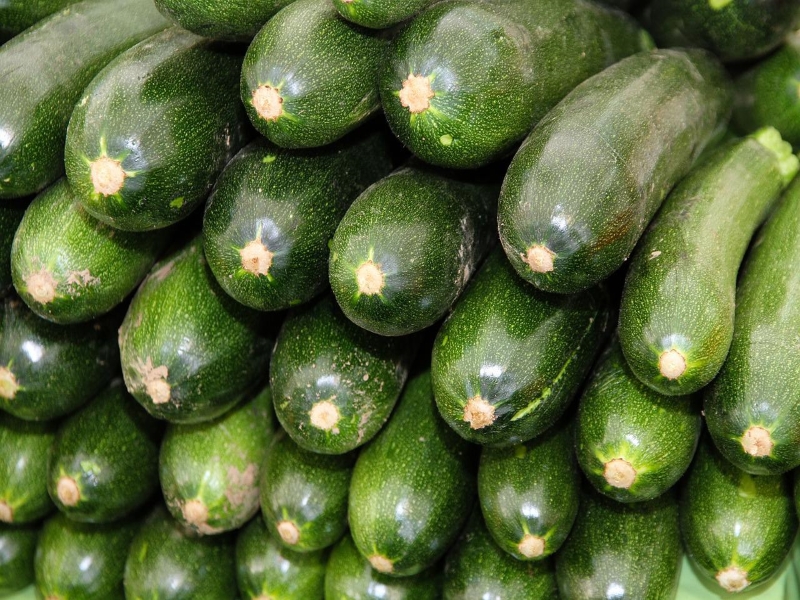
Zucchini History
Like other squash, zucchini originated in the Americas, notably Mesoamerica. However, as many as three centuries after the arrival of cucurbits from the Americas, variants of green, cylindrical squash that are harvested before they are fully grown and are commonly referred to as “zucchini” were grown in northern Italy. Although a book published in Milan in 1901 has the first description of the variation going by the name zucchini, it appears that this happened in the second half of the 19th century. Earlier types often added the names of adjacent cities to their titles.
Zucchini’s appearance to America is first recorded in the early 1920s. It was very undoubtedly brought to America by Italian immigrants, and it was probably first grown in California. One of 60 cultivated varieties of C. pepo is referred to as “Zucchini” in a 1928 study on vegetables grown in New York State.
Let’s get to the main topic now. Below is a list of the various types of zucchini.
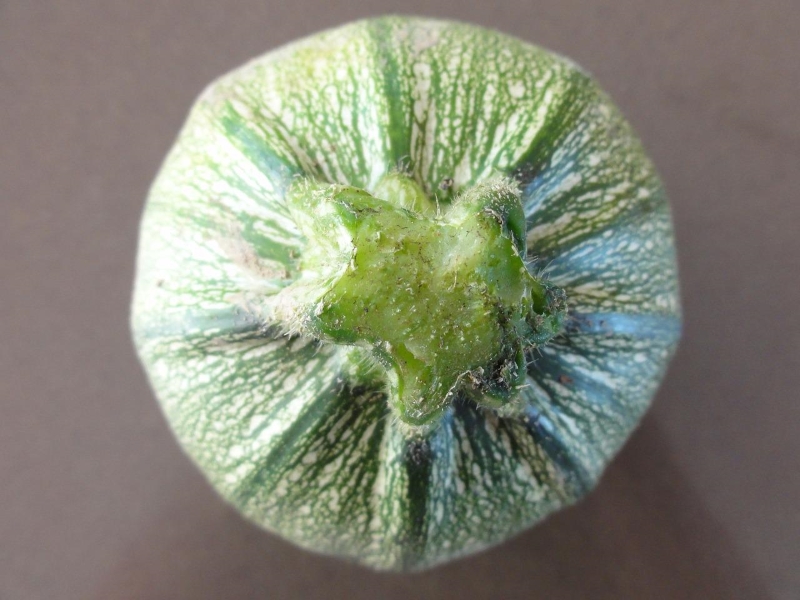
1. Round Zucchini
Round Zucchini has a dark green color and mild sweet taste. It is mainly used in stuffing, grilled dishes, and cook in oil.
Round zucchini has the distinctive flavor of zucchini. It tastes somewhat bitter and sweet. Cooking and eating fresh zucchini both maintain its sensitive texture. Its form is distinct from other zucchini cultivars, though. Its charming round form will amaze you.
Round zucchini is used to create stuffing. The dark green shell is concealed by the bright components. Furthermore, you can make a grilled zucchini and slice it to create the ideal summertime snack. Another excellent idea is to cook it in oil.
Always search for round zucchini at the supermarket if you want to stuff, bake, or roast your zucchini. With the use of a knife, it is simple to hollow out the spherical zucchini and fill it with a delicious filling. If you bake it, you’ll have a lovely, flavorful cup of roasted zucchini in no time.
Round zucchini can be frozen, so feel free to stock your kitchen with lots of them. Make sure you are familiar with zucchini rotting signs so you can determine if it is still edible.
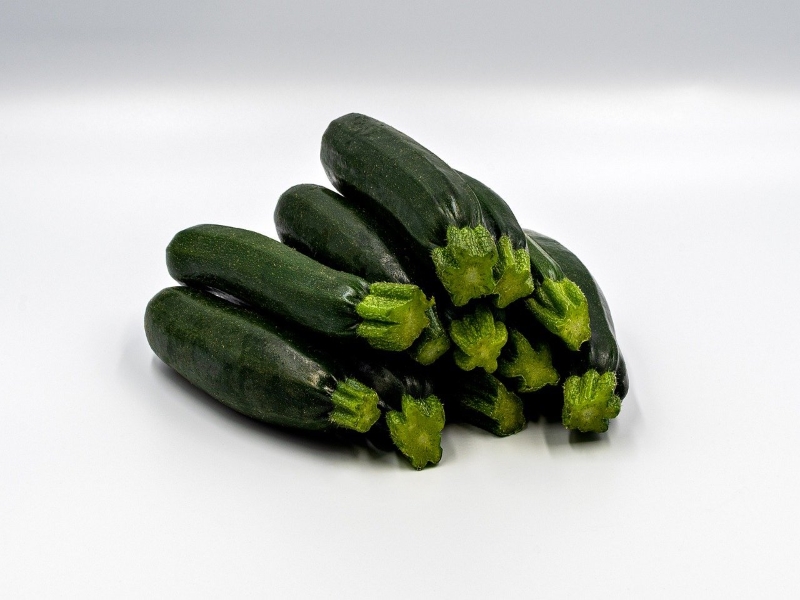
2. All Green Bush Zucchini
As the name implies, all green bush zucchini are green squash. This specific type of zucchini gets its name because the plant that produces it grows like a bush.
Although this zucchini may reach a height of 8 inches when completely grown, it is often plucked when it is about half that size since this is when you will discover the most crispy deliciousness in the fruit. Before it becomes too soft to cook, you may now eat the zucchini’s skin as well.
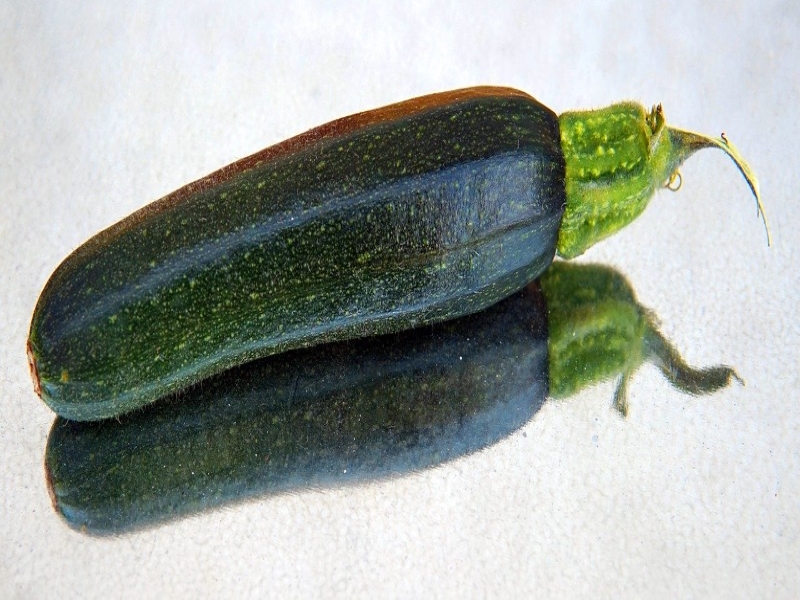
3. Black Beauty Zucchini
This variety of zucchini also has a mild taste. Because of its stunning, dark green skin that almost seems black, this zucchini is known as the “black beauty”. Perfect for pickling, gravies, soups, and salads.
The most often used kind of zucchini is the Black Beauty zucchini. Without a doubt, this is one of the most popular zucchini varieties on the market. Its form is customarily long and narrow, and its flavor is mild. The flesh within is a delicate white tint, but the skin is a dark green tone.
Any recipe that asks for zucchini, including salads, baked goods, gravies, and soups, may be made using this type. You may eat black beauty zucchini raw or use it to create pickles.
Black Beauty is prevalent because it is relatively simple to grow and maintain. After 50 days, the plant can produce a significant number of zucchini, and enjoy it however you choose. Black Beauty tastes delicious when it is young and old. To make the older ones more soft, you can grill them in olive oil.
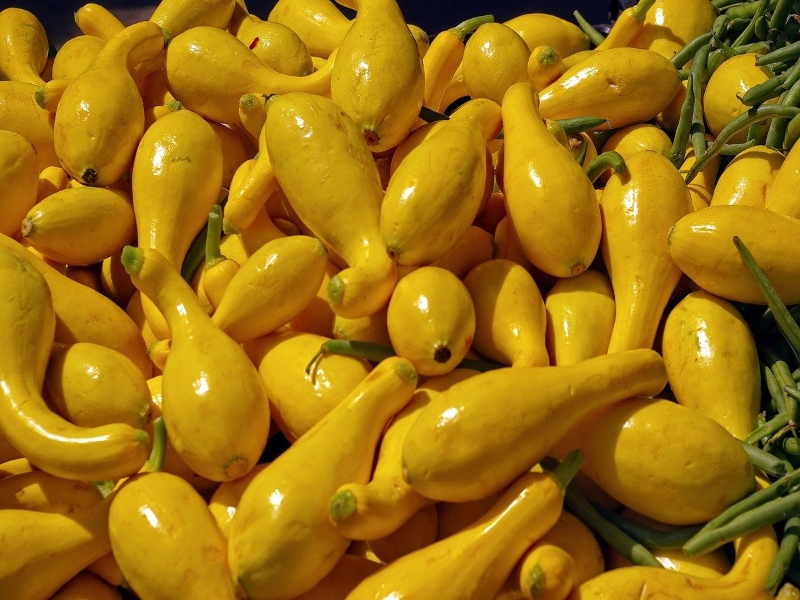
3. Crookneck Squash
Crookneck squash, often known as yellow squash, has a distinctive look. It consists of a body component and a neck part. The neck is slender and curved, while the body is oval-shaped. This colorful zucchini comes in a variety of colors, including bright yellow, pale green, and a mix of both yellow and green. It has a mild flavor.
Since it is likewise yellow, crookneck squash is sometimes mistaken with a zucchini variant called “straight neck squash.” Bright yellow squash is harvested earlier than other zucchini varieties.
When they are somewhat less than two inches in diameter, farmers usually harvest them. They get older and their skin becomes tougher, making them ready to store or consume.
This bright yellow color zucchini has a mild sweet taste and may be used in a number of dishes. It may be consumed raw or used in casseroles, baked goods, fried foods, and sautéed foods.
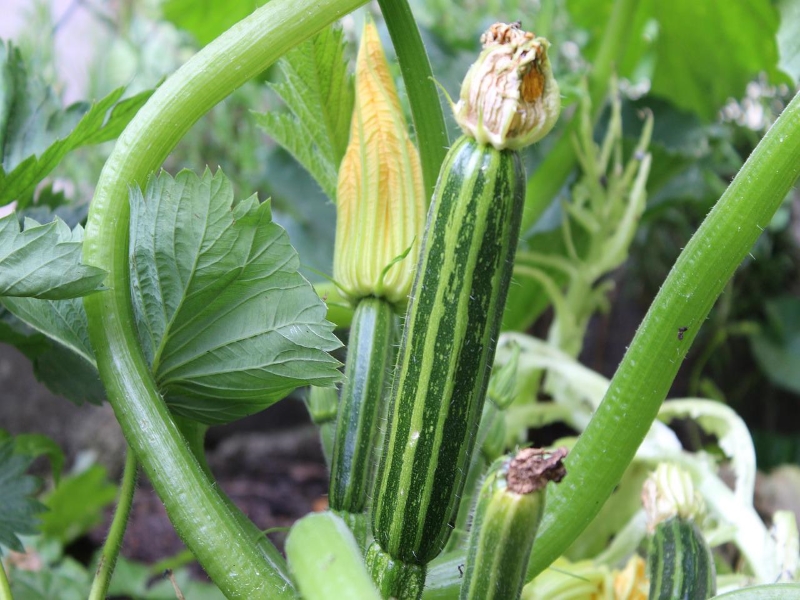
4. Gadzukes Zucchini
Gadzukes Zucchini plant produces dark green fruits. It has a sweet and crisp flavor. Excellent for making salads, casseroles, and pasta.
When freshly sliced, the thin, neat slices of this dark-green Italian Zucchini form the shape of a star, making it attractive. Generally speaking, every slice that you cut off will reveal the star-like pattern.
Most of the exterior skin is dark green. There are occasionally some pale green dots or lines.
You may utilize Gadzukes to prepare any meal that calls for zucchini, including salads, casseroles, curry, stir fry, spiraled zucchini noodles, and spaghetti, to mention a few, if you have some on hand in the kitchen.
Gadzukes should be planted straight at your house as well. This kind doesn’t need any extra maintenance. It also usually grows. The zucchini may only be harvested 50 to 55 days after planting.
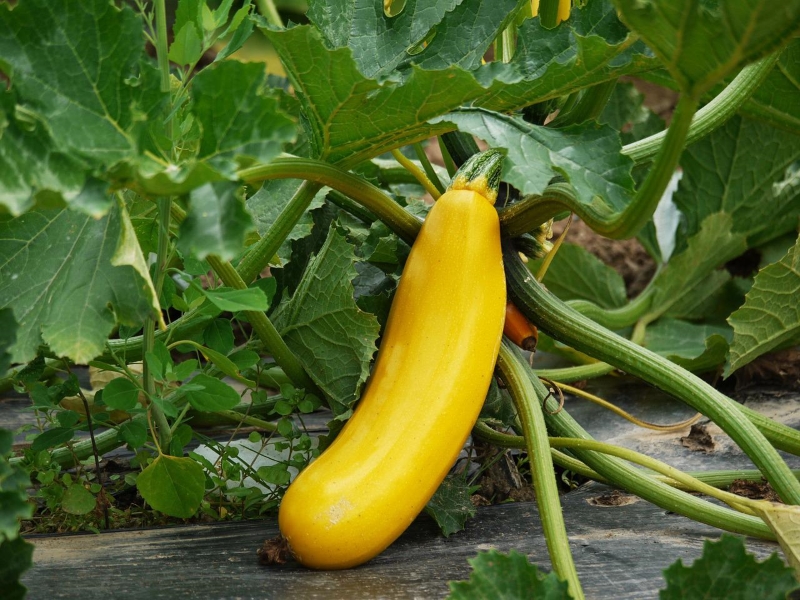
5. Gourmet Gold Zucchini
Gourmet gold zucchini get their name from its stunning yellow color. While the majority of the zucchini varieties mentioned up until this point have been green in color, whether dark or light, these have a bright yellow hue.
They provide a lot of color to any meal or plate of salad. Although the flavor of this zucchini isn’t much different from that of the traditional green zucchini, the color is unquestionably striking.
A simple touch of yellow zucchini will make your dishes stand out. Buy some of these vibrant, yellow zucchini to amaze everyone.
Because Gourmet Gold is so soft, it is used exclusively in a recipe for zucchini frittata. However, you may use it in a wide variety of recipes, including fries, pizza, and sweets like muffins. It may take on the characteristics of other ingredients and enhance the flavor of your salads.
The zucchini plant has a long lifespan and can yield crops.

6. Magda
Magda Zucchini has a light green color and has a nutty, sweet taste. This light green zucchini is perfect for stuffing, pickling, and sauteed dishes.
Magda is easily distinguished from other types of zucchini because of its bright green hue. Similar to other types, it has a sweet flavor with nutty undertones. Neither Magda is slim nor round. It is between 3 to 4 inches in length. This is an excellent zucchini to use if you want to prepare a quick fresh stir fry or want to add a splash of a bright-tasting squash to a curry.
It may be consumed even in a grill since the liquids that secrete give it a crisp and crispy flavor that is ideal for a summer barbeque. The Magda zucchini plants flourish the greatest in small harvests. The vine will be healthier the smaller the crop. So, make the most of your limited supply of Magdas.
Additionally, it may be used for pickling and stuffing.
Magda should not be preserved, as it tastes best when it is fresh, unlike other types. All you need to do is salt it, and you’ll have a delectable meal to eat because of its amazing taste.
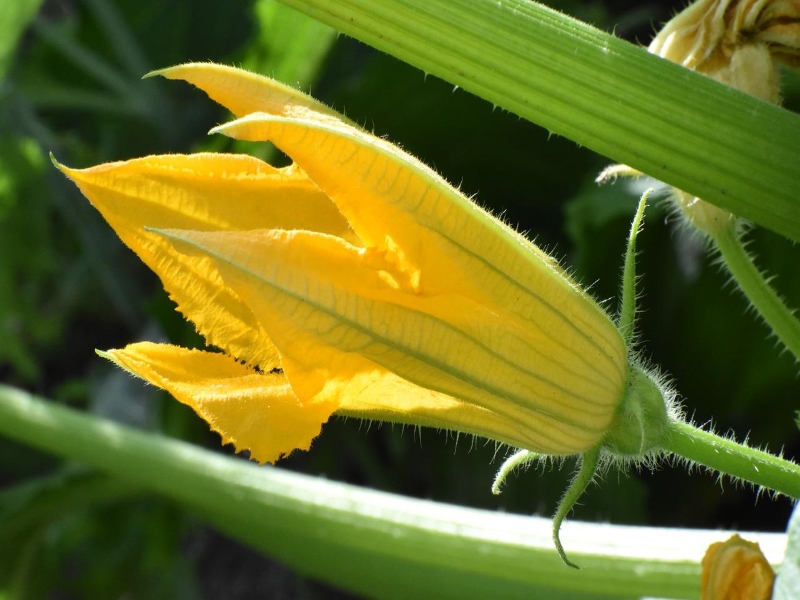
7. Zucchini Flowers
Zucchini Flowers taste like squash, and it can be orange and yellow. Ideal for omelet and stuffing.
These vibrant summer blossoms may be eaten. The fruit’s top is where the blossoms are situated. The top is orange, while the bottom is pale yellow. It is frequently used with stuffing bacon, ricotta, and mushrooms to produce quesadillas. It is also a well-liked component of egg meals like frittatas and omelets.
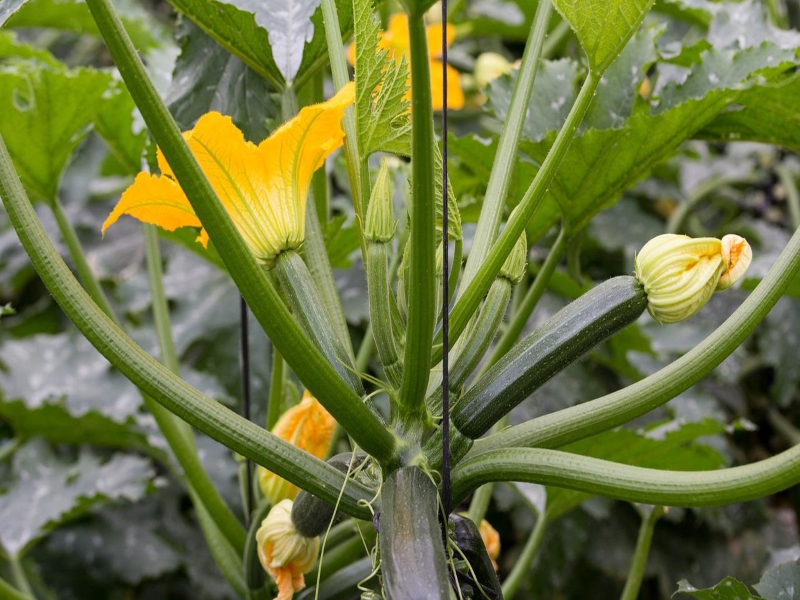
8. Nero de Milano Zucchini
This exotic zucchini originates from Italy, specifically the Lombardy area of the lovely nation. For home gardeners and gardening enthusiasts, this zucchini plant is very gratifying.
Nero di Milano, which translates to “Black of Milan” in English, is a reference to the squash’s skin color, which is so dark that it might appear to be black.
These 8-inch-long zucchini varieties should be harvested as soon as they reach maturity. In fact, the more fruits you remove from this plant, the more you stimulate the plant to produce more fruits.

9. Tromboncino Zucchini/Rampicante Zucchini
This type of zucchini has a light green color, and has a mild sweet. This is perfect for gnocchi, pasta, noodles, spaghetti, and sautéd dishes.
The form of the tromboncino zucchini is extremely long. Its maximum length is three feet. The word “Tromboncino” is the Italian equivalent of the word “trombone,” which refers to an instrument with a long, straight form.
These tall zucchini varieties typically continue to expand for the duration of their time on the vine. The zucchini lengthens along with the vine. It comes as a long, thin fruit with a bottom that is flat and fatty. This type is Italy’s national zucchini. Its maximum length is 15 inches.
You may just harvest them at any length you desire if you want them to be shorter. However, before picking the zucchini, make sure the skin has become lime green and darker stripes have begun to develop on the body. This type of zucchini also has the advantage of producing significant yields both in the summer and winter, making it almost year-round available.
Similar to other types, the flesh of zucchini from the Rampicante is delicate and moderately sweet.
This squash has a long, slender shape. These many zucchini varieties have an upward turning bottom that gives it the appearance of an instrument.
It tastes rich, lightly sweet, and is undoubtedly extremely good. Italian zucchini won’t let you down. It is thought that this type tastes even better. Tromboncino zucchini may also be fried to create delectable Italian side dishes, or it can be used to soups and stews. Furthermore, it may be used in pies, vegetables, seafood dishes, stuffing, and baked dishes.
Your BBQ party will definitely be more tasty if you grill it.
These squashes are typically a pale green tint, but as they become older, they get increasingly lighter and can even turn creamy. Since they are one of the climbing veggies, these plants are sometimes referred to as climbing zucchini in contrast to the common bushy zucchini plant variation.
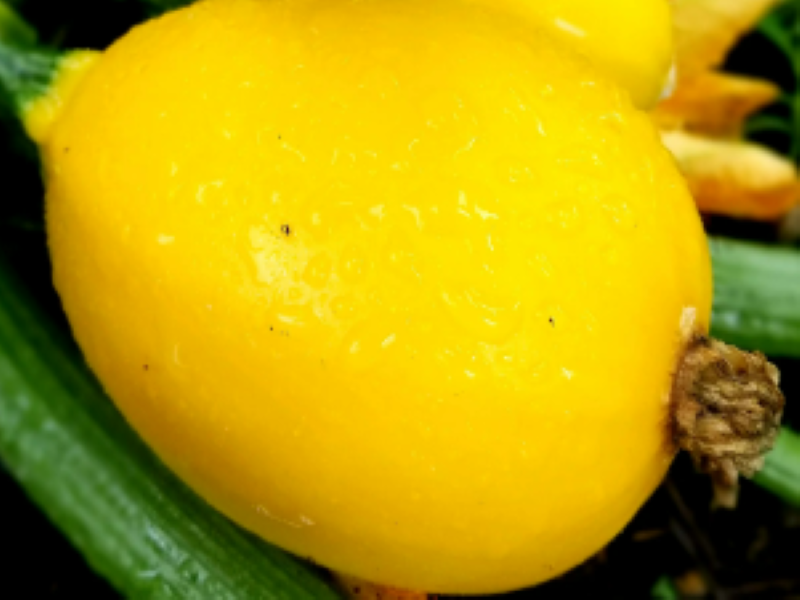
10. Golden Egg
This particular variety of zucchini resembles a huge, yellow egg. People adore this type because it grows quickly and requires little maintenance. In 41 days, harvest is expected.
Everyone swoons over the creamy flesh of this lovely variety. Golden egg zucchini has a strong, sweet flavor that is sometimes compared to chartreuse. Its incredible flavor makes it the ideal ingredient for muffins, pancakes, and fritters.
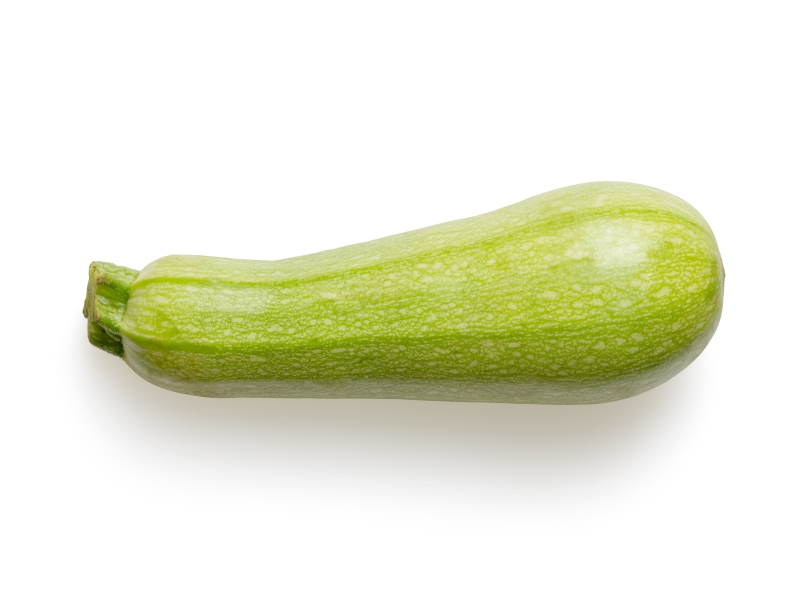
11. Bianco di Trieste Zucchini
The Bianco di Trieste zucchini is a pale green zucchini with a lovely and glossy skin. These shorter varieties of zucchini typically barely reach half the length of many of the longer courgettes.
Italian word for “white” is “bianco,” and Trieste is the Italian city where the zucchini first gained popularity. You have plenty of room to create a filled zucchini delicacy because they also tend to be little more bloated near the bottom.
As one of the earliest fruits to bloom during the season, these zucchini varieties are also renowned for their rapid production. Their stunning appearance on a salad dish is due to the pale green skin, which may nearly be mistaken for white.

12. Pattypan Squash
This variety of zucchini comes in a range of colors and sizes. Aside from yellow, these delicious squashes are also available in shades of cream, white, light green, and dark green. These adorable-looking zucchinis come in a variety of sizes in addition to a broad selection of colors; sizes range from teeny-tiny to medium to huge.
Although it has greater sweetness, pattypan squash tastes pretty similar to regular zucchini. Pattypan squash may be stuffed, roasted, or grilled just like round zucchini. You could try pattypan squash casserole, stuffed pattypan squash, roasted pattypan squash with garlic and herbs, and pattypan squash carpaccio, among other delectable pattypan meals.
To obtain the greatest taste, get the young ones. You may grill, fry, or roast it instead of filling it.
Between 45 and 70 days after planting, pattypan squash can be harvested. It will taste like a potato as it develops.

13. Caserta Zucchini
A medium-sized, coming from the heirloom zucchini variety is called Caserta. It features light and darker green stripes as well, but the dark green portion is wider. Caserta is thinner than other kinds.
The most popular zucchini of all time is Caserta. The easiest way to cultivate Caserta is in a tiny garden, which is its finest feature. For me, this is probably the best zucchini.
The inside is filled with flavorful, rich, and soft flesh. Caserta is the type to use if you want to grow zucchini in a compact area. It is recommended to collect the fruit when it is still soft. It tastes great at that time.
Caserta zucchini are a wonderful summer veggie, much as other varieties. It may be used to make delectable dishes that will satisfy your taste buds by being stir-fried, steamed, grilled, or sautéed.

14. Dunja Zucchini
Other types are well known for their distinctive looks and exquisite flavors. Dunja zucchini, however, is adored by many gardeners since it is simple to harvest due to the thin spines and open space of the plants.
Despite the fact that Dunja Zucchini lacks a unique look that would impress others. With lustrous dark green skin and a long, straight form, it appears attractive.
Dunja zucchini may be used in a variety of recipes, including chips and fritters, much like other varieties of zucchini.
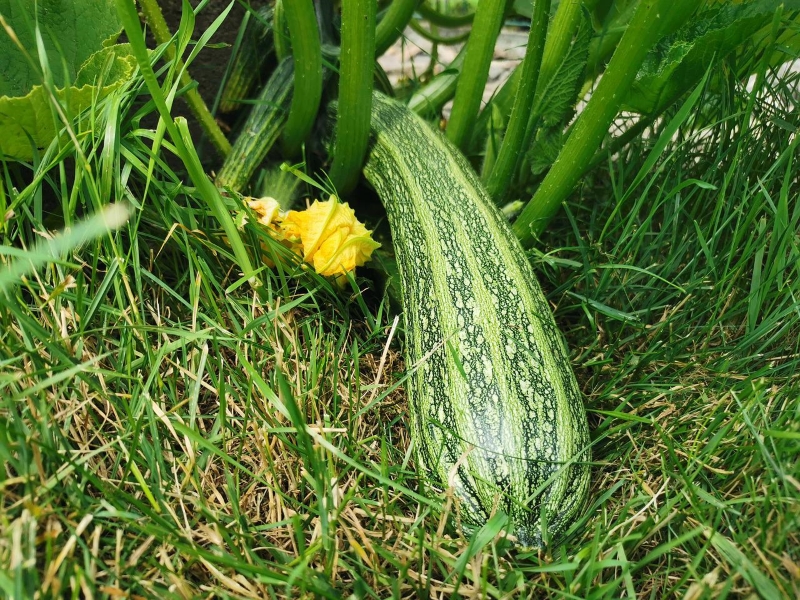
15. Cocozelle Zucchini
Although often one of the least watery zucchini kinds, a cocozelle zucchini nonetheless has a delicious flavor. It can appear pretty similar to a dark green cucumber, but what distinguishes it from the latter is a series of unmistakable darker green streaks on its body.
Since cocozelle zucchini are less watery than the majority of other types, I t is important to keep in mind that cocozella should be harvested on time. After planting, it will reach maturity in around 50–60 days. If you save it for later, it can dry up and lose some of its flavor.
This type of zucchini is frequently recognized as a traditional Italian heirloom zucchini that gained popularity in the Naples area.
You may create delectable grilled and baked meals using this variety.
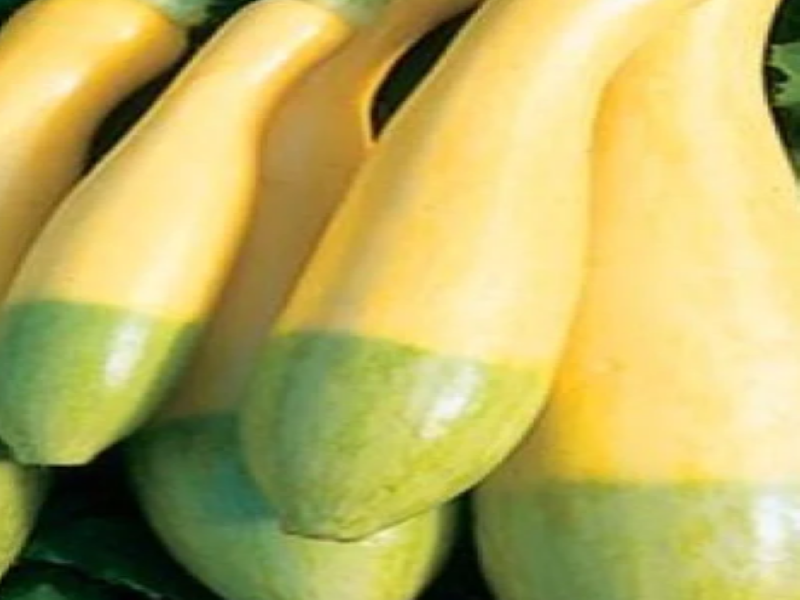
16. Zephyr Zucchini
This type of zucchini has a yellow flower attached to it. The fruit itself is separated into two parts: a yellow part and a light green portion. It lacks the other variations’ smoothness. The flower of Zephyr is entirely edible, which is even more extraordinary.
Zephyr tastes pleasantly nutty. It is ideal for salads, crudités platters, and many other meals, particularly sautés, because the skin is crisp and the interior is moist and soft.
Frequently Asked Questions
Zucchini doesn’t require peeling. The skin of the zucchini is a significant source of nutrients.
If you have a lot of zucchinis, the finest ways to prepare zucchini are sautéed and added to spaghetti, baked into bread, roasted, added to a vegetable soup, and simply stewed.
Zucchini doesn’t necessarily need to be salted before grilling, although doing so might enhance the flavor. The zucchini loses some moisture when it is salted. As a result, the texture becomes firmer and more resembles that of cooked vegetables rather than becoming soggy.

